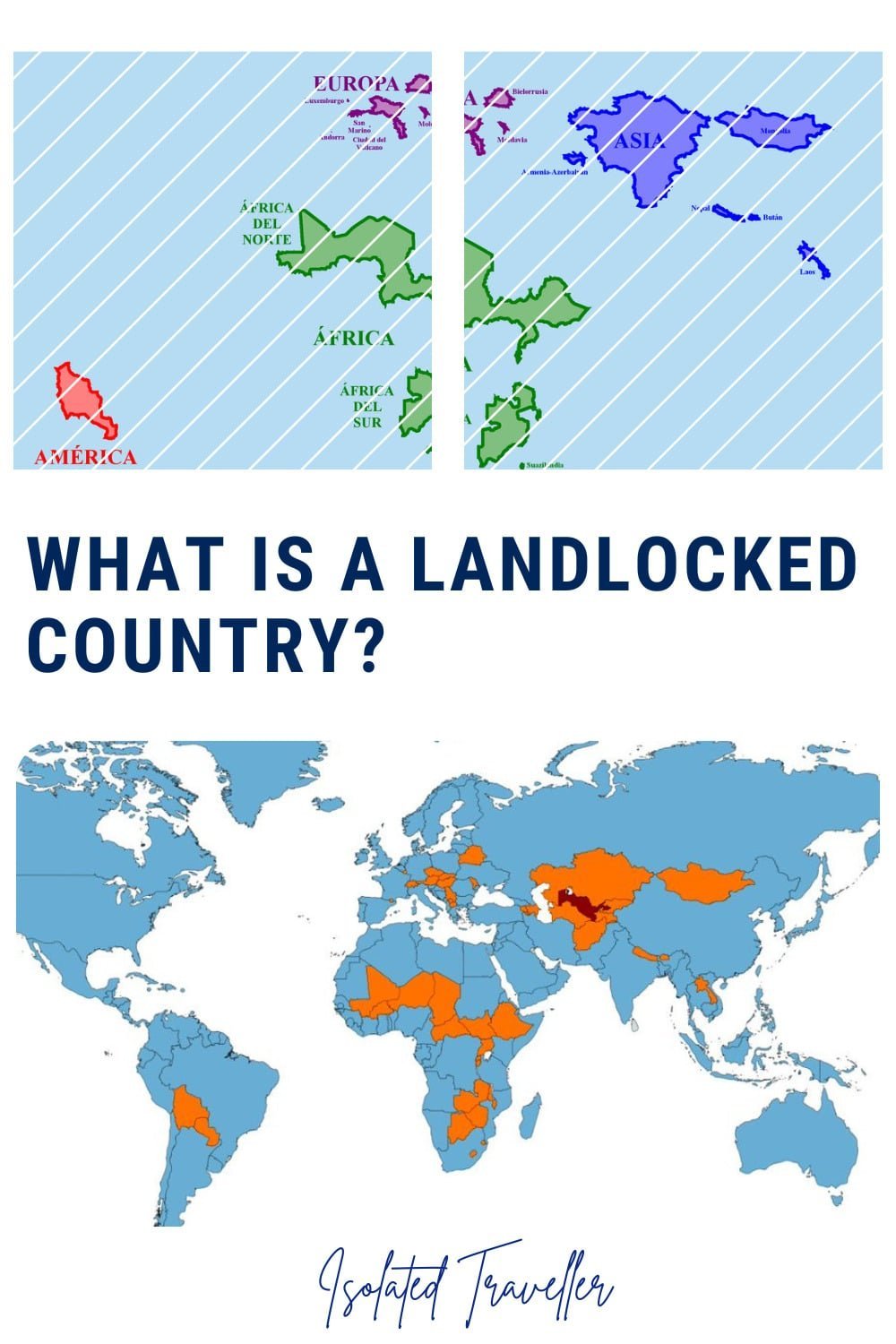What Is A Landlocked Country?
A landlocked country is a country that is completely surrounded by land and does not have a direct outlet to the sea. Landlocked countries do not have a coast and are not able to access the ocean directly by boat or ship.
Landlocked countries often face unique challenges related to transportation, trade, and access to natural resources. Because they do not have direct access to the sea, they may have to rely on other countries for access to ports and other coastal areas. This can make it more difficult and expensive to import and export goods and resources, which can have an impact on the economy of a landlocked country.
In order to overcome these challenges, many landlocked countries have developed strong trade relationships with their neighbours and have built infrastructure such as roads, railways, and airports to facilitate the movement of goods and people. Landlocked countries may also rely on other means of transportation, such as trucking or air cargo, to support their economies and meet the needs of their populations.
There are numerous landlocked countries around the world, including Afghanistan, Bhutan, and Burkina Faso, landlocked countries in Central Asia, and landlocked countries in South America. Landlocked countries often face unique challenges related to transportation, trade, and access to natural resources, and may have to rely on other means to support their economies and meet the needs of their populations.
How many Landlocked countries are there?
There are approximately 44 landlocked countries in the world.
List of Landlocked Countries
- Afghanistan
- Andorra
- Armenia
- Austria
- Azerbaijan
- Belarus
- Bhutan
- Bolivia
- Bosnia and Herzegovina
- Botswana
- Burkina Faso
- Burundi
- Central African Republic
- Chad
- Czech Republic
- Eswatini
- Ethiopia
- Hungary
- Kazakhstan
- Kyrgyzstan
- Laos
- Lesotho
- Liechtenstein
- Luxembourg
- Mali
- Moldova
- Mongolia
- Montenegro
- Nepal
- North Macedonia
- Niger
- Paraguay
- Rwanda
- San Marino
- Serbia
- Slovakia
- Swaziland
- Switzerland
- Tajikistan
- Turkmenistan
- Uganda
- Uzbekistan
- Vatican City
- Zambia
This list is not exhaustive and there may be other landlocked countries that are not included here. Landlocked countries are often geographically isolated and may face unique challenges related to transportation, trade, and access to natural resources. However, many landlocked countries have developed strategies and infrastructure to overcome these challenges and support their economies and populations.
List of 5 partially recognized landlocked states
List of the largest 5 landlocked countries
Kazakhstan
Kazakhstan is the largest landlocked country in the world, with an area of about 2.7 million square kilometres. It is located in central Asia, bordered by Russia to the north, China to the east, Kyrgyzstan and Uzbekistan to the south, and the Caspian Sea to the west. The country has a varied landscape, with mountains, plateaus, and vast steppes. The climate of Kazakhstan is continental, with cold winters and hot summers. The capital of Kazakhstan is Astana, which was renamed Nur-Sultan in 2019. The country is a member of the United Nations, the Shanghai Cooperation Organization, and the Turkic Council, among other international organizations.
Mongolia
Mongolia is a country located in East Asia, between Russia and China. It is the second-largest landlocked country in the world, with an area of about 1.5 million square kilometres. The capital of Mongolia is Ulaanbaatar, which is also the largest city in the country. Mongolia is known for its vast, open landscapes, including the Gobi Desert and the Mongolian Steppe. The country has a cold, dry climate, with long, harsh winters and short, cool summers. The economy of Mongolia is largely based on agriculture, mining, and tourism.
Chad
Chad is a landlocked country located in central Africa, with an area of about 1.3 million square kilometres. It is bordered by Libya to the north, Sudan to the east, the Central African Republic to the south, Cameroon and Nigeria to the southwest, and Niger to the west. The capital of Chad is N’Djamena. Chad has a varied landscape, including mountains, deserts, and savannas. The climate is generally hot and dry, with the wet season occurring from June to September in the south and from May to November in the north. The economy of Chad is largely based on agriculture and oil production.
Afghanistan
Afghanistan is a landlocked country located in South Asia, with an area of about 647,000 square kilometres. It is bordered by Pakistan to the south and east, Iran to the west, Turkmenistan, Uzbekistan, and Tajikistan to the north, and China to the far northeast. The capital of Afghanistan is Kabul. Afghanistan has a varied landscape, including mountains, deserts, and plains. The climate is mostly dry and arid, with cold winters and hot summers. The economy of Afghanistan is largely based on agriculture and natural resource extraction, including oil, gas, and minerals.
Burkina Faso
Burkina Faso is a landlocked country located in West Africa, with an area of about 274,000 square kilometres. It is bordered by Mali to the north, Niger to the east, Benin to the southeast, Togo and Ghana to the south, and Côte d’Ivoire to the southwest. The capital of Burkina Faso is Ouagadougou. Burkina Faso has a varied landscape, including savannas, forests, and mountains. The climate is generally hot and dry, with a rainy season from June to October. The economy of Burkina Faso is largely based on agriculture, with the main crops being cotton, peanuts, and sorghum.
Kyrgyzstan
Kyrgyzstan is a landlocked country located in central Asia, with an area of about 199,000 square kilometres. It is bordered by Kazakhstan to the north, Uzbekistan to the west, Tajikistan to the southwest, and China to the east. The capital of Kyrgyzstan is Bishkek. Kyrgyzstan has a varied landscape, including mountains, plateaus, and valleys. The climate is continental, with cold winters and hot summers. The economy of Kyrgyzstan is largely based on agriculture, mining, and tourism.


